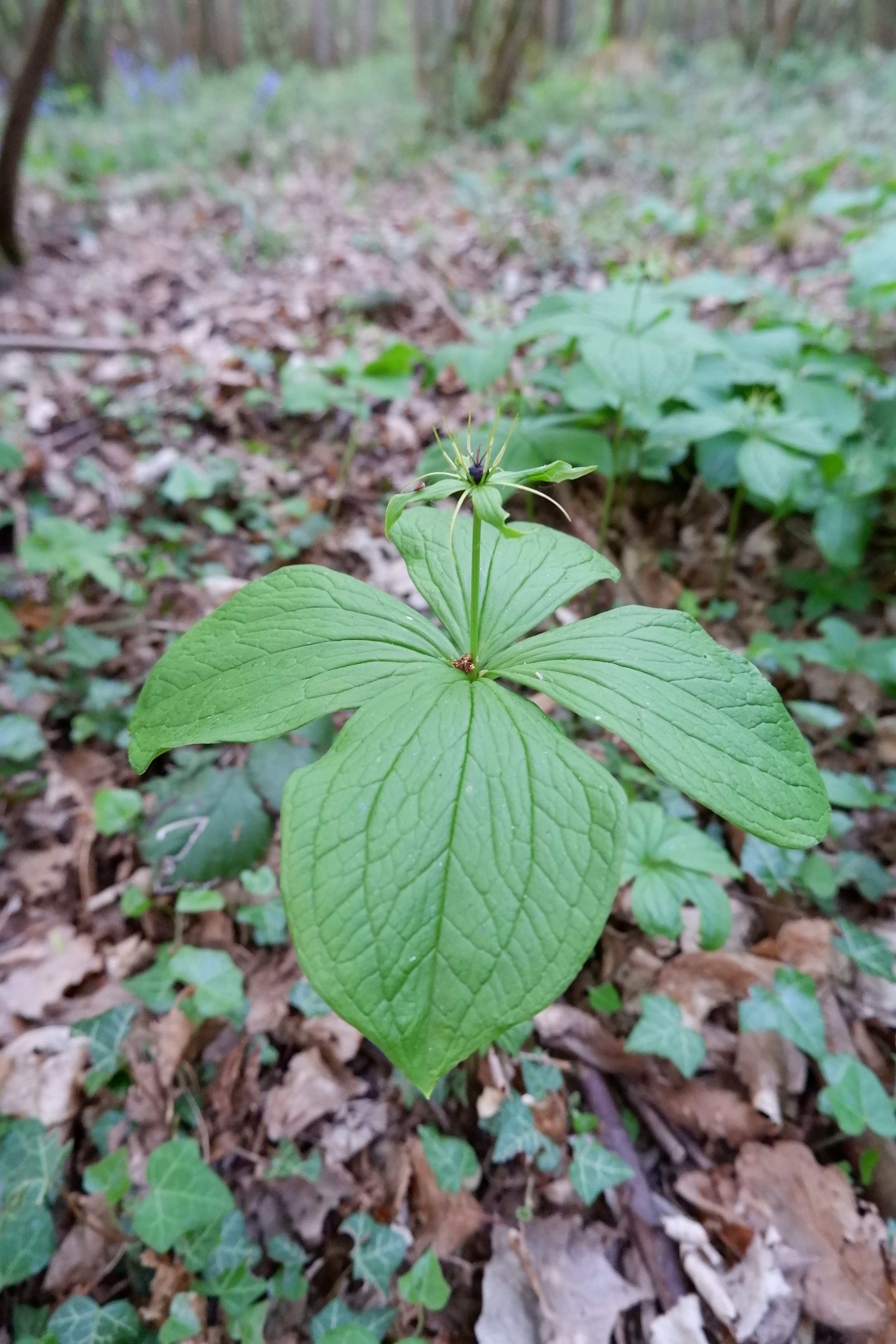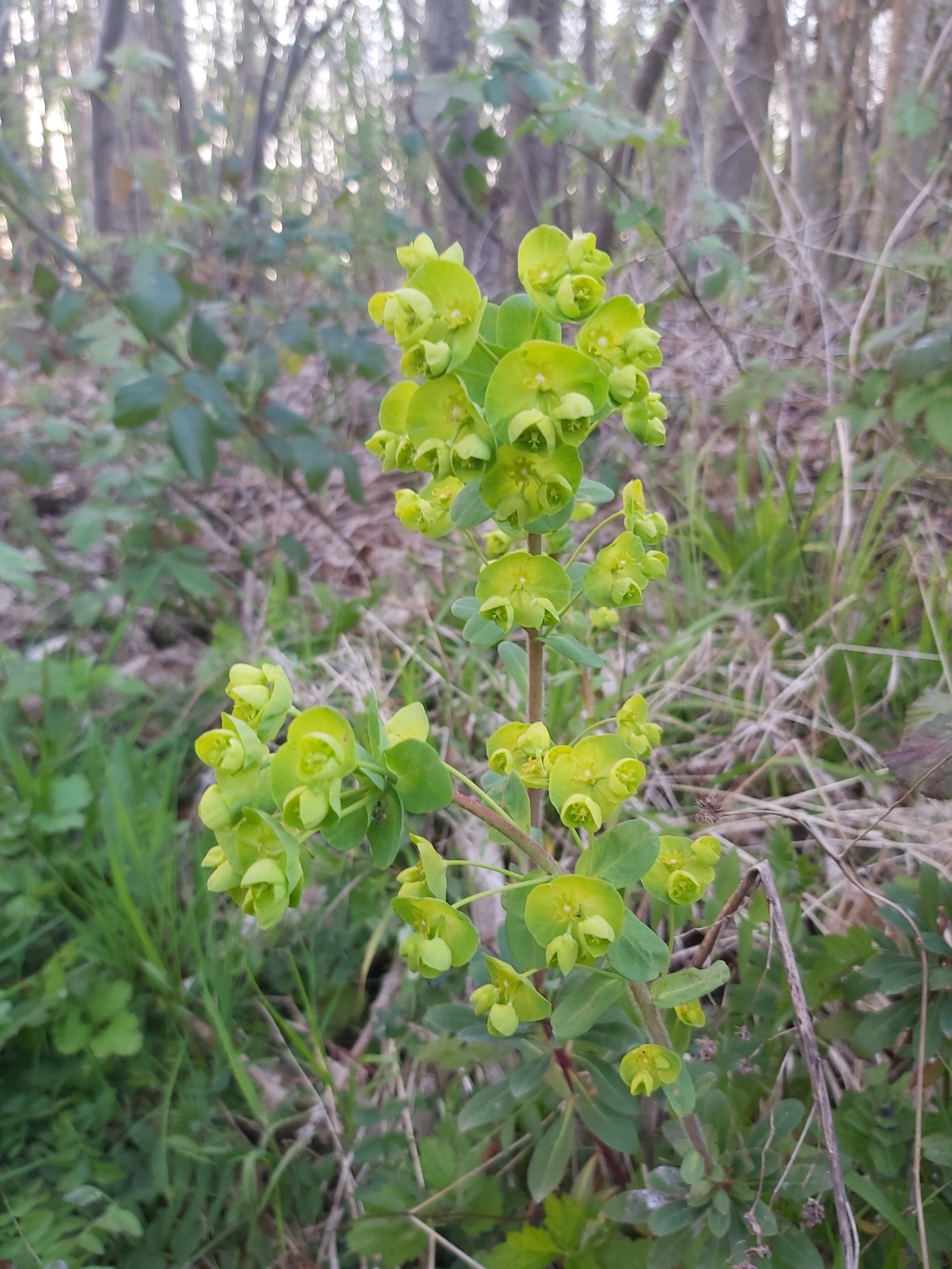Flora of Adisham’s Woods
Adisham’s woods are home to a remarkable diversity of ground flora, including several species that are both locally and nationally rare.
There are several reasons for this.
Firstly, a large proportion of Adisham’s woods are classified as ancient woodland, defined as woodland that has persisted since at least 1600 AD. The lack of soil disturbance, presence of veteran trees and continuity of decaying plant matter has created ideal conditions for a range of fungi to thrive, which supports the growth of many species of woodland plants.
Secondly, Adisham’s woods are home to a range of soil types, demonstrated by the variety of trees and wildflowers that are able to grow across the different woodland blocks.
Thirdly, Adisham’s woods have traditionally been managed through a regime of rotational coppicing. Coppicing is beneficial for biodiversity as the continued harvesting and regrowth of tree stems periodically opens up the woodland canopy, allowing more light to reach the woodland floor and enabling a greater range of species to thrive.
Lastly, the recent widening of several woodland rides has, similarly to coppicing, allowed more light to reach ground level in many places. This has happily resulted in a wide variety of plant species growing beside the public footpaths.
Wildflowers are a significant part of why Adisham’s woods are so enchanting to visit. It is important to never pick, uproot or trample on any flowers found in the woods. This ensures they can be enjoyed by all who visit the woods and remain part of a thriving woodland habitat. Uprooting any wild plants is illegal under the Wildlife and Countryside Act 1981.
Notable Species
Lady orchid (orchis purpurea)
Perhaps the most iconic flower to grow in Adisham’s woods, the Lady Orchid is nationally very rare and almost completely confined to Kent’s chalk landscapes. It has a bold, stately appearance and is able to grow up to a metre in height. Its purple-white flowers can vary significantly in shape and appearance, even within single colonies. Adisham’s SSSI woods are home to one of Kent’s larger populations of this orchid, where it occurs in highly selective areas.
Lesser butterfly-orchid (platanthera bifolia)
Rarely found in Kent and classed as vulnerable on the GB Red List for vascular plants, the lesser butterfly-orchid occurs in very small numbers in Adisham’s woods. It is a small, delicate orchid with an unusually long spur, which contains nectar that can only be reached by the long proboscis of butterflies and moths.
White helleborine (cephalanthera damasonium)
Classed as vulnerable on the GB Red List for Vascular Plants, this orchid develops skyward-facing, creamy-white flowers that self-pollinate. While much larger colonies can be found in nearby beech woods, this orchid occurs in small numbers in Adisham’s ‘Tower Woods’ and SSSI woods.
Birds-nest orchid (neottia nidus-avis)
This other-worldly orchid has no leaves and contains no chlorophyll, relying solely on nutrients it receives from fungi in the soil to grow. It emerges in larger numbers during damp springs, yet dead flower spikes from previous years often remain visible. This orchid occurs rarely in deeply-shaded parts of Adisham’s SSSI woods.
Early-purple orchid (orchis mascula)
One of the first orchids to flower in the UK each year, the early-purple orchid is one of the iconic signs of spring’s arrival in Adisham’s woods. Mentioned in Shakespeare’s Hamlet as ‘long purples’, consuming this orchid’s roots has traditionally been considered an aphrodisiac. It occurs frequently in many of Adisham’s woods.
Common spotted-orchid (dactylorhiza fuchsii)
This is the most widespread and common orchid found in the UK, however it typically favours grasslands, marshes and verges and is locally uncommon. Occurring rarely and sporadically in Adisham’s woods, this orchid can be distinguished by its narrow, spotted leaves and boldly-marked lilac-white flowers.
Common twayblade (neottia ovata)
The common twayblade is one of the UK’s most common and widespread orchids and is a key indicator species of ancient woodland. It occurs in vast numbers in Adisham’s woodlands, where it often grows in clumps.
Previous Records
Narrow-lipped helleborine (epipactis leptochila)
This rare orchid is mentioned as a notable species in Natural England’s citation for Adisham’s SSSI woods. However, it has not been recorded anywhere in Kent for several decades.
Fly orchid (ophrys insectifera)
This species has not been recorded in Adisham’s woods for a long time but occurs in a number of sites in East Kent. Classed as vulnerable on the GB Red List for vascular plants, this orchid is notoriously challenging to spot, which reduces the chances of finding and recording it.
Ancient Woodland Indicator Species
Adisham’s woods are home to many species of plants that are associated with ancient woodland. A selection of these are listed below.
Herb-paris (paris quadrifolia)
Yellow archangel (lamiastrum galeobdolon)
Wood spurge (euphorbia amygdaloides)
Yellow pimpernel (lysimachia nemorum)
Bluebell (hyacinthoides non-scripta)
Wood anemone (anemone nemorosa)
Primrose (primula vulgaris)
Bush vetch (vicia sepium)
Butcher’s-broom (ruscus aculeatus)















